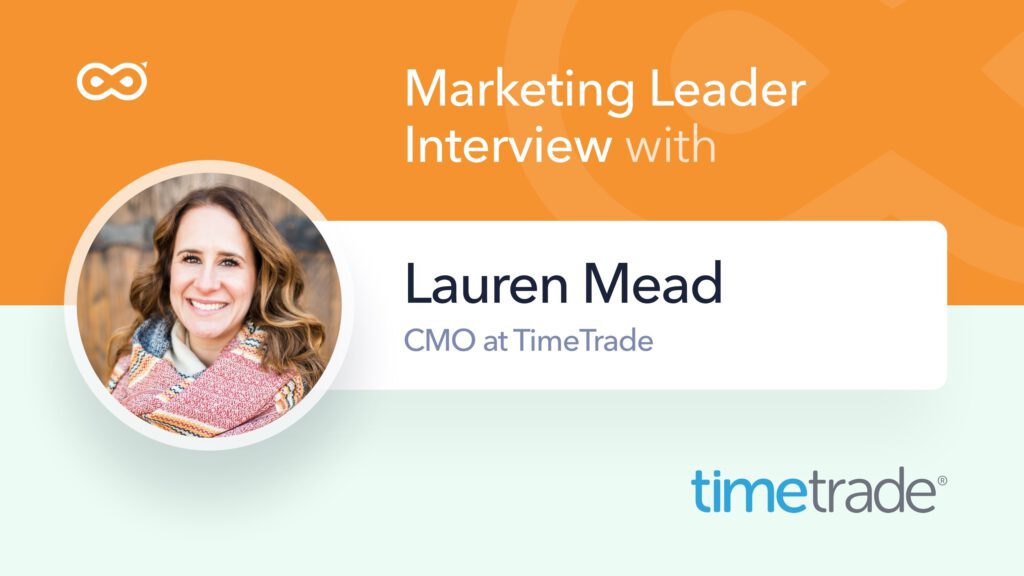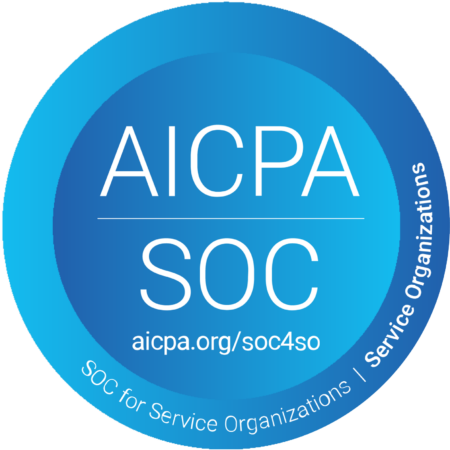Welcome back to Q&A with Marketing Leaders, our series designed to provide SaaS marketing leaders with the best insights and actionable tips on how to improve their marketing planning by learning from the best marketers in the industry.
In this latest edition, we got to speak with Lauren Mead, CMO at TimeTrade.
TimeTrade helps leading brands optimize engagement through all phases of the customer relationship. TimeTrade’s Intelligent Appointment Scheduling platform harnesses the power of artificial intelligence to improve meeting scheduling strategies through real-time customer insights and actions, producing better meetings and higher growth businesses, with TimeTrade customers outpacing their peers by nearly 3X. Tens of thousands of businesses – including leading global banks, retailers, and software companies – use TimeTrade’s Appointments-as-a-Service platform to deliver the personalized attention expected by today’s on-demand consumers.
Lauren is responsible for TimeTrade’s marketing strategy and execution, including branding, messaging, demand generation, digital and product marketing, and public relations. She joined the company in 2016 with more than 10 years of B2B technology marketing experience. Prior to TimeTrade, Lauren was Senior Director of Marketing at ClickSoftware. She earned a bachelor’s degree in marketing from Merrimack College and an MBA in marketing from Bentley University.
So how did you originally get into marketing?
I’ve actually spent the majority of my professional career in marketing. As an undergrad in university, I studied marketing because I wanted to be an event planner and, in the corporate world, that often falls under marketing. I did a couple of internships through school, but my first real job out of school, as an intern, was doing marketing for a B2B technology company. While events were part of my job, it wasn’t my whole job. I got a lot of exposure to everything that is B2B marketing and I loved being able to wear so many different hats and take on different roles, so I ended up sticking with it.
Why B2B over B2C?
I’ve never really done B2C marketing per se, so I can’t really judge that but what I like most about B2B marketing is the complexity that it entails. You’re trying to look at every different stakeholder, every different company and group people into segments to help you understand your buyer.
What do you think is the most important skill or skills that today’s marketing leaders need to have to be successful?
In my opinion, it’s the ability to wear a lot of different hats. There’s so much out there and the role of the CMO has greatly changed. You need to be focused on the company and understand the numbers and data, but at the same time, you need to be able to tell a story and build a brand. There are many different elements and those in a marketing leadership role have to juggle multiple elements at the same time.
Another skill is the ability to build a strong team to support specific objectives and manage people. It’s important that you are able to really understand your team. A lot of my time is actually spent more on managing people than actually doing marketing.
Being able to wear all those different hats and adapt to what the business needs at different times are crucial skills for the modern marketing leader.
What does your marketing planning process look like? How do you approach marketing planning?
We usually start at a company level and build the company plan; what is our strategy? what are the goals and objectives that we need to drive toward?
From the company plan, we get the sales numbers that we need to meet. At this point, I work with the sales leadership and my own team to build out our marketing plan and objectives.
Once we have the sales number, we plug them in and do a reverse funnel where we say, “Okay, this is the number that we need to hit. This is our conversion rate throughout the funnel. So this is what marketing ultimately needs to deliver this year.” Once our marketing objectives are set, we start choosing the programs and plans that are going to help us hit those numbers. We will assign an estimated lead and opportunity flow based on each program. This means that we have an idea of what we need each program to deliver to make sure we’re going to hit that top-level goal.
So you review past performance and conversion rates and build the plan based on that?
Exactly.
We look at every quarter and the conversion rates between our funnel stages to understand our conversion rates to sales. We’ll then take into consideration other sales info and the velocities — how long to close a deal and our average deal size. It allows us to say, “Okay, if we know that we need this many opportunities to generate this much revenue, these are the types of campaigns we need to run to hit that.”
For us, it’s can be a bit more complex because we also sell to a lot of different types of businesses. That means it’s not just a single number. We need to decide how much focus to put on each target market and segment and build out programs that can deliver that.
Let’s talk about your stack. Do you use any specific tool to track your marketing performance and/or budget?
Nothing really specific. We don’t use an ABM platform or anything like that. We’ve built a lot of customizations within Salesforce to help with reporting. We also pull insights from Marketo and do some manual tracking and reporting in Excel. We don’t really have a data visualization tool or some kind of highly specialized marketing analytics platform.
How do you decide which marketing channels to utilize in your marketing plan?
We use a lot of different channels. We find that different buyers respond to different things and ultimately, we add up all of those different touchpoints that ultimately get the results. For example, a BDR will be cold outreaching to a prospect and they’ll call them and put them through a cadence and not get a response. But then a few weeks later, we see them come inbound through our website. I think attribution, from that sense, can be a little bit murky.
When looking at specific channels, what we’re trying to do is find a good mix between established channels and new channels. We can’t only try new stuff because that would be too risky. But we also don’t want to be too complacent and only use established channels that we know.
This isn’t a hard and fast number but I would say we try and spend about 80% of our budget on channels that we’ve tested and have shown to be successful for us and then about 20% in new channels that could have a big upside.
Essentially, we’re constantly testing out new things and trying to find out what’s going to be the next thing to help us drive growth.
Do you ever feel pressured to use a specific channel? Like if your competition uses a certain channel, you feel that you need to be there as well? Or do you purely use what’s working best for you?
Good question. Sure.
I think if you see a competitor using a specific channel, you always kind of have that FOMO of like “what do they know that we don’t know”, right? But we don’t tend to derive our decisions just solely based on where our competitors are.
We will certainly look at the channels where they are present and evaluate those based on our own criteria to see if it makes sense. There’s plenty of places that our competition goes that we don’t and I know there’s a lot of places that we go to that they don’t. I think that being a little different is good. It’s not necessarily fun when you go to a trade show and you look around and your three top competitors are there and you’re like “okay, well, now our problem is different. Now we have to help these companies understand why TimeTrade versus the competition” instead of “why appointment scheduling is essential for your business”.
How often do you adjust your marketing plan after you’ve created it?
We’re constantly reviewing and adjusting. We generally do a big hard look at the end of every quarter.
A lot of times, our plan includes a lot of “placeholders”. There are certain things in the plan, like events, that are booked a year in advance, so those have a little bit less flexibility, but some of the other items are a lot more flexible. We will purposely leave “placeholders” and not commit our entire budget until we get into that quarter. That allows us to make changes and adjustments where necessary.
But as a small growing company, we’re continually making adjustments and changing our plan.
How do you know if you’ve planned well?
Honestly, I think it comes down to if we hit the outcome that we were looking to achieve.
Sometimes, a good plan doesn’t always yield results. Sometimes there are external forces, beyond your control, that can impact your plan. But, if you achieved the results that you were aiming for that hopefully means that you planned well and built the right programs and processes that led you to success.
What is your biggest challenge in terms of marketing planning? What’s tedious? What do you struggle with the most?
I think one of the things that I tend to struggle with is that a big piece of marketing is thinking about the very top of the funnel. Because of this, we tend to be much further ahead than a lot of other teams, so marketing often has to be the driver of planning and making sure that the company’s planning is in place well in advance. If we have an 8-month sales cycle, then I’ve actually been generating pipeline for 2020 since May 2019.
A lot of my 2020 marketing plan was already locked and loaded in early 2019. You’re constantly having to think a lot further ahead than most people in the organization, which can be challenging, especially if things are changing a lot. So just keeping that alignment and driving the organization to look further out is really important. Especially in B2B and especially when you have a long sales cycle.



